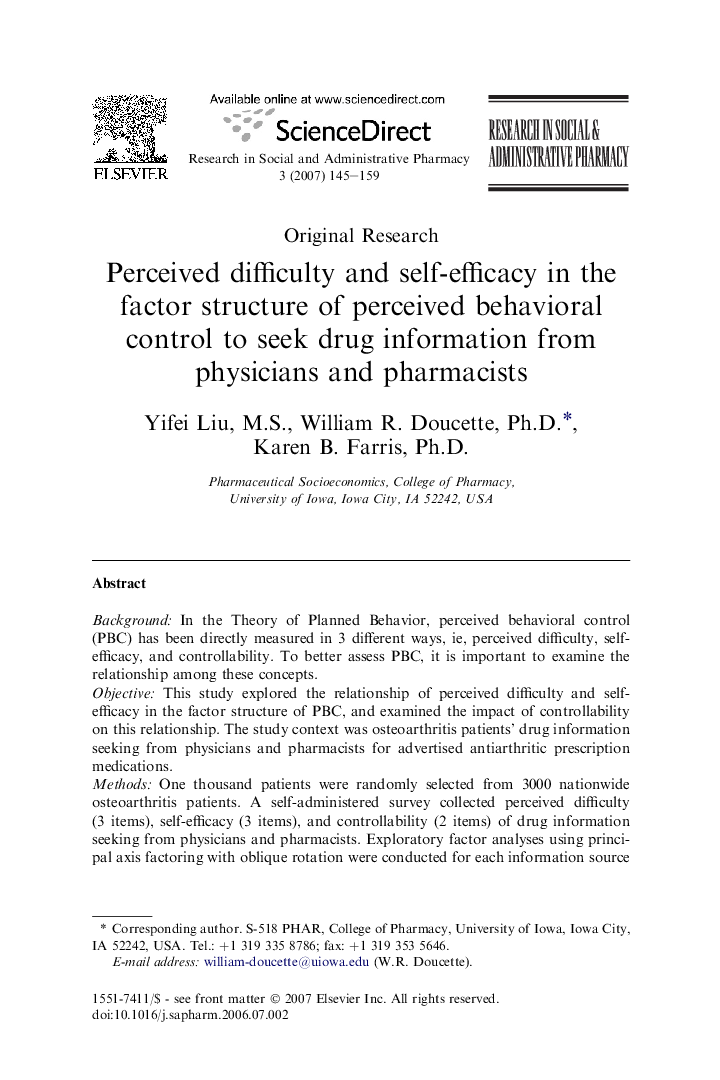| کد مقاله | کد نشریه | سال انتشار | مقاله انگلیسی | نسخه تمام متن |
|---|---|---|---|---|
| 2509053 | 1117638 | 2007 | 15 صفحه PDF | دانلود رایگان |

BackgroundIn the Theory of Planned Behavior, perceived behavioral control (PBC) has been directly measured in 3 different ways, ie, perceived difficulty, self-efficacy, and controllability. To better assess PBC, it is important to examine the relationship among these concepts.ObjectiveThis study explored the relationship of perceived difficulty and self-efficacy in the factor structure of PBC, and examined the impact of controllability on this relationship. The study context was osteoarthritis patients' drug information seeking from physicians and pharmacists for advertised antiarthritic prescription medications.MethodsOne thousand patients were randomly selected from 3000 nationwide osteoarthritis patients. A self-administered survey collected perceived difficulty (3 items), self-efficacy (3 items), and controllability (2 items) of drug information seeking from physicians and pharmacists. Exploratory factor analyses using principal axis factoring with oblique rotation were conducted for each information source for perceived difficulty and self-efficacy items by (1) the Kaiser criterion and the scree plots, and (2) extracting 2 factors. The 2-factor factor loadings were examined by the extent of controllability. For each information source, 2-factor principal factor analyses were performed for those who reported high control over the behavior and those who reported low control.ResultsThe response rate was 61.9%. Perceived difficulty and self-efficacy loaded on the same factor when the Kaiser criterion and the scree plots were used. They loaded on separate factors when forced into the 2-factor structure. The 2-factor structure for the group with low control had more cross loadings than the 2-factor solution for the group reporting high control of information search.ConclusionsPerceived difficulty and self-efficacy may represent 2 dimensions of an overall concept. Controllability impacts whether perceived difficulty and self-efficacy overlap or diverge, with higher controllability associated with distinct dimensions.
Journal: Research in Social and Administrative Pharmacy - Volume 3, Issue 2, June 2007, Pages 145–159